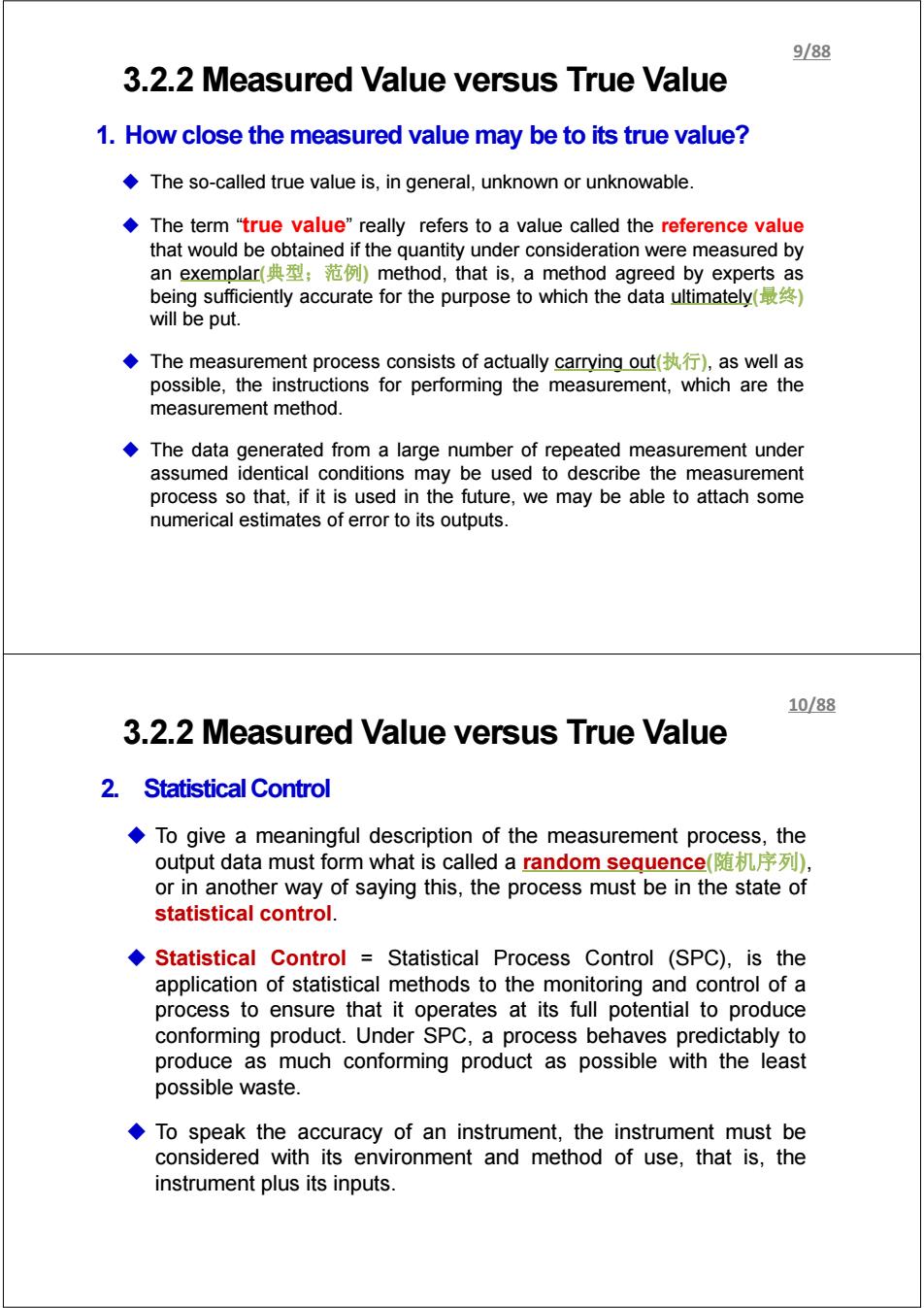正在加载图片...

9/88 3.2.2 Measured Value versus True Value 1.How close the measured value may be to its true value? The so-called true value is,in general,unknown or unknowable. The term "true value"really refers to a value called the reference value that would be obtained if the quantity under consideration were measured by an exemplar(典型;范例)method,.that is,.a method agreed by experts as being sufficiently accurate for the purpose to which the data ultimately() will be put. ◆The measurement process consists of actually carrying out(执行),as well as possible,the instructions for performing the measurement,which are the measurement method. The data generated from a large number of repeated measurement under assumed identical conditions may be used to describe the measurement process so that,if it is used in the future,we may be able to attach some numerical estimates of error to its outputs. 10/88 3.2.2 Measured Value versus True Value 2.Statistical Control To give a meaningful description of the measurement process,the output data must form what is called a random sequence(随机序列), or in another way of saying this,the process must be in the state of statistical control. Statistical Control Statistical Process Control (SPC),is the application of statistical methods to the monitoring and control of a process to ensure that it operates at its full potential to produce conforming product.Under SPC,a process behaves predictably to produce as much conforming product as possible with the least possible waste. To speak the accuracy of an instrument,the instrument must be considered with its environment and method of use,that is,the instrument plus its inputs.3.2.2 Measured Value versus True Value 1. How close the measured value may be to its true value? The so-called true value is, in general, unknown or unknowable. The term “true value” really refers to a value called the reference value that would be obtained if the quantity under consideration were measured by an exemplar(典型;范例) method, that is, a method agreed by experts as being sufficiently accurate for the purpose to which the data ultimately(最终) will be put. The measurement process consists of actually carrying out(执行), as well as possible, the instructions for performing the measurement, which are the measurement method. The data generated from a large number of repeated measurement under assumed identical conditions may be used to describe the measurement process so that, if it is used in the future, we may be able to attach some numerical estimates of error to its outputs. 9/88 3.2.2 Measured Value versus True Value 2. Statistical Control To give a meaningful description of the measurement process, the output data must form what is called a random sequence(随机序列), or in another way of saying this, the process must be in the state of statistical control. Statistical Control = Statistical Process Control (SPC), is the application of statistical methods to the monitoring and control of a process to ensure that it operates at its full potential to produce conforming product. Under SPC, a process behaves predictably to produce as much conforming product as possible with the least possible waste. To speak the accuracy of an instrument, the instrument must be considered with its environment and method of use, that is, the instrument plus its inputs. 10/88